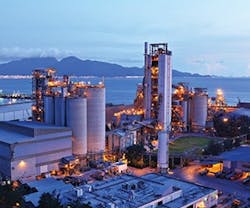Manufacturers Recognized by EPA
The EPA has announced that 70 manufacturing plants have achieved ENERGY STAR certification in 2014. The manufacturers’ efficiency measures have collectively cut energy bills by $725 million, reducing greenhouse gas emission by over 8 million metric tons.
Among the winners include plants from cement manufacturing, auto assembly, corn refining, food processing, glass manufacturing, pharmaceutical manufacturing, and petroleum refining industries.
While ENERGY STAR certification is available for most types of facilities, the EPA is also working to create industry-specific ENERGY STAR plant benchmarking tools to give facility managers an accurate, reliable way to measure their building’s performance against the rest of the industry. Tools are currently in development for over 20 manufacturing sectors.
Additionally, ENERGY STAR provides seven tips for manufacturing facilities to start the energy management process:
1) Commit to Continuous Improvement – Companies that end up seeing financial returns on their energy efficiency investments are constantly striving to top their own achievements. Don’t give up after that first victory.
2) Assess Performance – Be sure that you’re periodically assessing energy use and performance within facilities. All the improvements in the world won’t do much good if you can’t verify the cost savings associated with their implementation.
3) Set Goals – Goals for energy performance should be made clear to help guide daily decision-making. Be sure you determine the scope of the project and potential for improvement when making the goals to ensure that they’re both meaningful and achievable for your organization.
4) Create an Action Plan – Goals are great, but they won’t turn into cost savings unless you have the right plan. Define technical steps and targets for everyone involved in the initiative.
5) Implement Goals – While this may sound simple, using your action plan correctly can be the difference between a cost-saving project and a failed one. Make sure to monitor results throughout the process to ensure optimal outcomes.
6) Evaluate Progress – Evaluations of energy-saving projects should be performed regularly. During your review, take a look at the achieved results compared to your action plan to help isolate areas where the initiatives may have fallen behind.
7) Recognize Achievements – What good is all that work if no one is aware of the results? Provide both internal and external recognition after a goal is reached to help boost morale and motivate employees to make even more sustainable choices.
